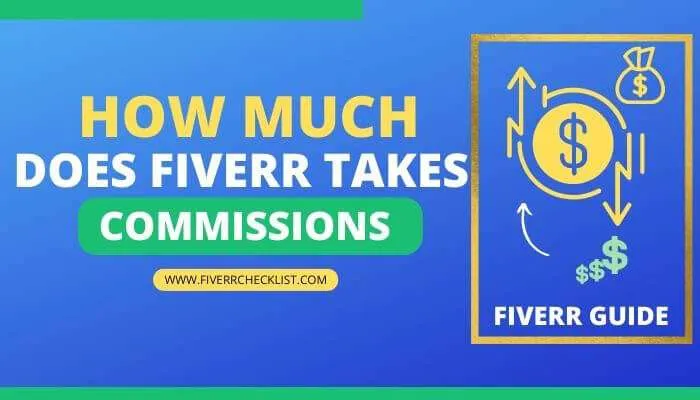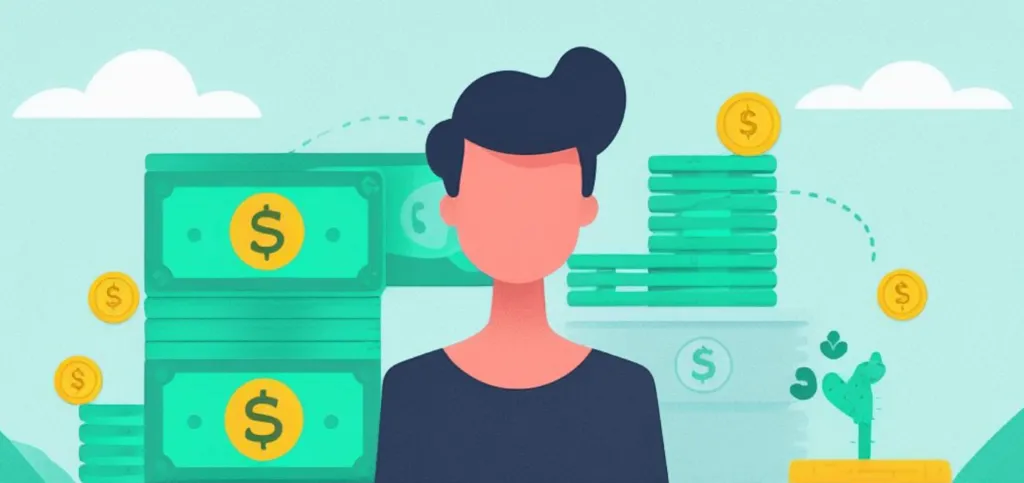If you're a freelancer or a business looking to engage services online, you might have heard of Fiverr. It’s a popular platform connecting buyers and sellers in various categories, from graphic design to programming. But before diving into the world of gigs and services, it’s essential to understand the costs involved. One of the biggest questions that come to mind is: What percentage of sales does Fiverr take? In this post, we’ll break down Fiverr’s fee structure, so you can better understand how this platform operates and what it means for your earnings.
Understanding Fiverr's Fee Structure

Fiverr has a unique approach to charging fees, and it can be a bit confusing at first. Let’s explore how the fee structure works.
1. Service Fees for Sellers
When you sell a service (or gig) on Fiverr, the platform takes a percentage of your earnings. This percentage varies based on your total earnings per order:
- 20% Fee: This is the standard fee that Fiverr charges for most sales. So if you sell a gig for $100, you'd keep $80.
- Custom Orders: If a buyer requests a custom order, the same 20% fee applies to the total order amount.
2. Buyer Fees
On the buyer’s side, Fiverr also imposes a service fee:
| Order Amount | Buyer Fee |
|---|---|
| Up to $40 | $2 |
| $40-$200 | 5% (minimum $2) |
| Over $200 | 5% only |
These fees are designed to maintain the platform and provide security for both buyers and sellers. While it may seem high, Fiverr does offer various features and access to a global marketplace that can often justify these fees.
3. Additional Considerations
Keep in mind that sellers might face other costs as well, such as:
- Withdrawal Fees: Depending on how you withdraw your earnings, you might incur a fee. For instance, PayPal charges withdrawal fees.
- Upgrading Gigs: If you want to promote your gig to gain more visibility, Fiverr offers paid options that can increase your initial costs.
Overall, being aware of Fiverr’s fee structure can help you strategize your pricing and understand your potential earnings more clearly.
Also Read This: How Much You Can Make as a Python Freelancer
3. Breakdown of Fiverr's Commissions

When it comes to using Fiverr as a freelancer or business owner, understanding their commission structure is super crucial. Fiverr operates on a tiered commission system primarily aimed at ensuring that both buyers and sellers have a fair experience. Let's break it down:
- Standard Commission Rate: Generally, Fiverr takes a 20% commission from the total earnings on every completed order. So, if a seller completes a gig for $100, Fiverr will take $20, leaving the seller with $80.
- Service Fees: For buyers, Fiverr adds a service fee to the price of an order. This fee can range from $2 to $25 depending on the order value, making it important for buyers to always check the total cost before finalizing their purchase.
- Pro Services: If you’re utilizing Fiverr Pro, which features top-tier freelancers, the commission structure remains the same—20%. However, the quality and professionalism are often significantly higher, which might justify the commissions for some buyers.
In addition to this, it's vital to note that Fiverr’s fee structure is transparent, meaning there are no hidden charges. They strive to keep freelance work simple, so by knowing these details upfront, both buyers and sellers can make informed decisions.
Also Read This: How to Set Up My Profile on Fiverr
4. Comparing Fiverr's Fees with Other Freelance Platforms
So, how does Fiverr's commission structure measure up against other freelance platforms? It’s always a good idea to compare costs so you can choose the best platform for your needs. Here’s a simplified comparison:
| Platform | Commission for Sellers | Service Fee for Buyers |
|---|---|---|
| Fiverr | 20% | $2 to $25 |
| Upwork | 5% to 20% (depends on total billings with a single client) | Variable, based on client's discretion |
| Freelancer | 10% to 20% | Typically 3%* of the total cost |
As you can see, Fiverr has a straightforward approach with a flat 20% fee on earnings, while platforms like Upwork and Freelancer have more complicated structures based on client relationships and project totals. This may make Fiverr more appealing to those who prefer simplicity in their earnings.
Ultimately, the best choice can vary depending on your individual needs, but understanding these fee structures is the first step in maximizing your freelance experience!
Also Read This: How to Market Yourself on Fiverr
5. Impact of Fiverr's Fees on Freelancers
Freelancers on Fiverr often find themselves navigating through various fees that can significantly impact their overall earnings. When you sign up as a seller on Fiverr, it's essential to understand the fee structure, as it directly affects your take-home pay.
Fiverr takes a standard commission of 20% from each sale, which means for every $100 you earn, you'll receive $80 after fees. This might seem steep at first, but let's break it down a little further:
- Base Fee: The 20% fee comes from the total amount you charge your clients, which can include base price, add-ons, and extras.
- Withdrawal Fees: In addition to the Fiverr commission, withdrawal methods may incur their own fees. For example, transferring funds to PayPal could lead to additional charges.
- Promotional Discounts: If you offer a discount to attract buyers, this will also reduce your earnings proportionally since the Fiverr fee is calculated on the total sale price.
These fees can become a significant concern for many freelancers, especially as they scale their businesses on the platform. Regularly reviewing your offerings and staying aware of the fees can help you strategize better.
Adapting your pricing strategy and managing client relationships wisely can mitigate some of the negative impacts of these fees. Always remember, freelancers need to balance competitiveness with profitability for a sustainable career on Fiverr.
Also Read This: How to Do Social Media Marketing on Fiverr
6. Tips for Maximizing Earnings on Fiverr
Maximizing your earnings on Fiverr is not just about setting the right prices; it's about a combination of strategic planning and creative marketing. Here are some effective tips to help you boost your income:
- Optimize Your Gigs: Use clear, catchy titles and thorough descriptions with relevant keywords. The more optimized your gigs are, the higher they’ll rank in search results.
- Leverage Packages: Offer three pricing tiers—basic, standard, and premium. This creates options for buyers and can encourage them to choose more expensive packages.
- Utilize Add-Ons: Incorporating additional services for a small extra fee can increase your earnings significantly without requiring substantial extra effort.
- Showcase Reviews: Positive feedback boosts credibility. Always encourage clients to leave reviews and showcase them prominently on your profile.
Additionally, remember to:
Engage with Clients: Building strong relationships can lead to repeat customers and referrals.
Utilize Social Media: Promote your services on platforms like Instagram and LinkedIn to attract more buyers.
Stay Updated: Keep an eye on Fiverr's trends and adjust your services accordingly to meet market demands.
Implementing these practices can enhance your visibility, attract more clients, and ultimately increase your earnings on Fiverr. It’s all about smart strategies and providing value to your customers!
What Percentage of Sales Does Fiverr Take?
Fiverr is a popular online marketplace that connects freelancers with individuals or businesses seeking various services, ranging from graphic design to writing and programming. As a freelancer, understanding Fiverr's fee structure is crucial for managing your earnings effectively. This article explores Fiverr's commission percentage and its implications for freelancers.
Fiverr operates on a commission model, which means they take a cut of every transaction made through their platform. Here are the key details regarding the fees:
| Service Type | Commission Percentage |
|---|---|
| Standard Services | 20% |
| Fiverr Pro Services | 20% |
| Fiverr Business Services | 20% |
In addition to the standard commission, Fiverr charges a service fee that is deducted from buyers. This fee is typically $2 for orders up to $40 and 5% for orders exceeding that amount. This fee structure means that while freelancers receive 80% of their earnings (after the commission), buyers also pay a premium for using the platform.
It's essential for freelancers to factor in these fees when pricing their services. Many successful freelancers recommend pricing services higher to compensate for Fiverr's cut, ensuring that net earnings remain acceptable. By understanding the financial implications and planning accordingly, freelancers can make informed decisions about their services on Fiverr.
In summary, Fiverr takes a 20% commission from all sales, along with additional service charges for buyers, so freelancers must adjust their pricing strategies to maintain profitability.



